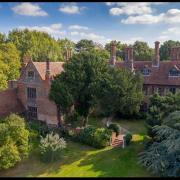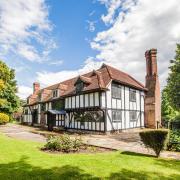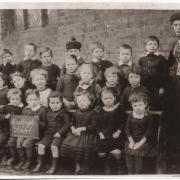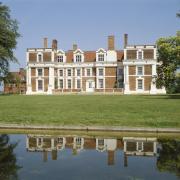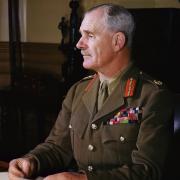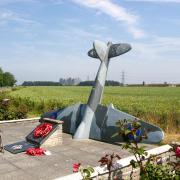This year marks the 80th anniversary of RAF Ridgewell turning operational, and with an Apple TV series about the Eighth Air Force (Masters of the Air, executively produced by Steven Spielberg and Tom Hanks) set to be aired in the spring, there is sure to be a surge in interest in bases such as Ridgewell. Paul Bingley explores what life was like when 2,000 American airmen descended on this Essex village...
In July 1945, a BBC radio correspondent visited the village of Great Yeldham. He was keen to get a glimpse of how life had changed in rural Essex following the end of the war in Europe. Not for the first time, the change in Great Yeldham had been momentous.
‘Can any good friend in America write and tell us a use for discarded chewing gum?’ asked one resident, whose young child quickly added, ‘I do miss the candies!’

Gum was just one of the legacies left by the thousands of Americans who had passed through Great Yeldham while serving at nearby RAF Ridgewell – an airfield that had become Essex’s only long-term heavy bomber base.
Four years earlier, acres of arable farmland had been ‘requisitioned’ by the Air Ministry. Over the next 15 months, thousands of tons of cement were laid – enough for 45 miles of dual carriageways. By the time Ridgewell opened in the winter of 1942, more than 500 buildings accommodating almost 3,000 people had been constructed.
Ridgewell’s first inhabitants were temporary visitors. British and Commonwealth airmen from RAF No. 90 Squadron arrived in Essex on a blustery December 29, 1942. Calamitously, the first Short Stirling bomber to approach one of the airfield’s three newly tarmacked runways bounced on landing and careered into a ditch. Fortunately, its crew were unhurt, but the accident marred Ridgewell’s entry into war.
It wasn’t until January 8, 1943, that 90 Squadron’s bombers took off on the unit’s first official operation – a minelaying exercise off the north-western coast of Europe. Over the next five months, a further 50 operations were carried out from Ridgewell; 18 of which involved 90 Squadron dropping mines in German naval lanes, while another 32 were conventional bombing raids on targets in France, Italy and Germany. When the squadron left for RAF West Wickham, Cambridgeshire, at the end of May 1943, it had lost 28 Stirlings in raids and accidents, while 132 of its airmen had been killed in action.
Ridgewell had originally been earmarked for RAF Bomber Command, but events on December 7, 1941 had changed all that. The surprise Japanese attack on Pearl Harbor had forced America into the war. The United States Army Air Forces quickly formed its Eighth Air Force, which soon joined the RAF in a round-the-clock bomber offensive against Germany. Ridgewell, which was already under construction, was hastily re-allocated to the Eighth, whose 381st Bombardment Group arrived shortly after 90 Squadron had departed.
On June 3, 1943, some 2,000 American airmen alighted at Great Yeldham station, having crossed the Atlantic onboard the luxury liner-turned-converted-troop-ship, RMS Queen Elizabeth. A few days later, the 381st’s Boeing B-17 Flying Fortress heavy bombers landed at Ridgewell after flying 4,800 miles from Colorado.

Combat operations for the group began on June 22, when 22 bombers climbed away from Ridgewell to target industrial areas in the Belgian port city of Antwerp. Two B-17s were subsequently shot down, while two more crash-landed on their return to England. However, this rough introduction to combat was the precursor to an even more catastrophic event.
The following day, while the group was preparing for its second mission, one of the Flying Fortresses suddenly exploded on the ground. A second blast 50 seconds later destroyed the aircraft, killing all 22 airmen who were working on and around it. Another American officer on a nearby B-17, and a British civilian who happened to be cycling past the scene, were also killed. The tragedy would prove to be the Eighth Air Force’s deadliest ground accident in England.
Bombing missions also claimed hundreds more lives across the two years that the 381st was based at Ridgewell. The group’s costliest day occurred two months after the ground explosion, when 11 bombers were shot down on a single raid on the German ball-bearing manufacturing town of Schweinfurt. More than 100 airmen were lost, although most survived to be captured. Nevertheless, the effect on those at Ridgewell was profound; the base being likened to a ‘city morgue’ by the 381st’s chaplain.
There were more lighter moments, however. Ridgewell’s proximity to London saw major celebrities like James Cagney, Edward G. Robinson, Vivien Leigh and Laurence Olivier all rush to visit. On September 2, 1944, Bing Crosby performed a two-hour show in one of its main hangars. Scores of locals were invited to attend – some even meeting the singer.
A total of 297 combat missions were eventually carried out from Ridgewell by the 381st. When the Second World War ended, 165 Flying Fortresses and some 1,290 men had been lost.
The group also suffered a further tragedy with the loss of a B-17 just two weeks before VE Day. Flying to Belfast with five crew members, 26 passengers (mostly ground crew personnel) and a dog, the aircraft crashed into a mist-covered hillside on the Isle of Man. All onboard were killed in what is still the Isle of Man’s worst air disaster.
Ridgewell’s time as an active airfield ended when the 381st left to return to the US in June 1945. The site was then modified for use as a bomb storage and disposal facility. It was finally decommissioned in 1957, when the runways and hardstands were broken up. Today, only a handful of buildings and sections of its perimeter track remain.
The two-year period when American airmen ‘crossed through’ would be fondly remembered by those living in Great Yeldham. ‘The village is very lonely without all you boys,’ lamented one lady in the BBC interview. ‘If you don’t come back and see us soon – well, I shall come over and fetch you – have you got that?’
Unfortunately, fewer and fewer of the ‘boys’ are coming back. But 80 years on, their presence is still felt.
Paul Bingley is the chairman of the Ridgewell Airfield Commemorative Museum, which is open to the public on the second Sunday of each month between March and October. He recently co-authored the book, Bomb Group: The Eighth Air Force’s 381st and the Allied Air Offensive over Europe, published by Casemate Publishers.








